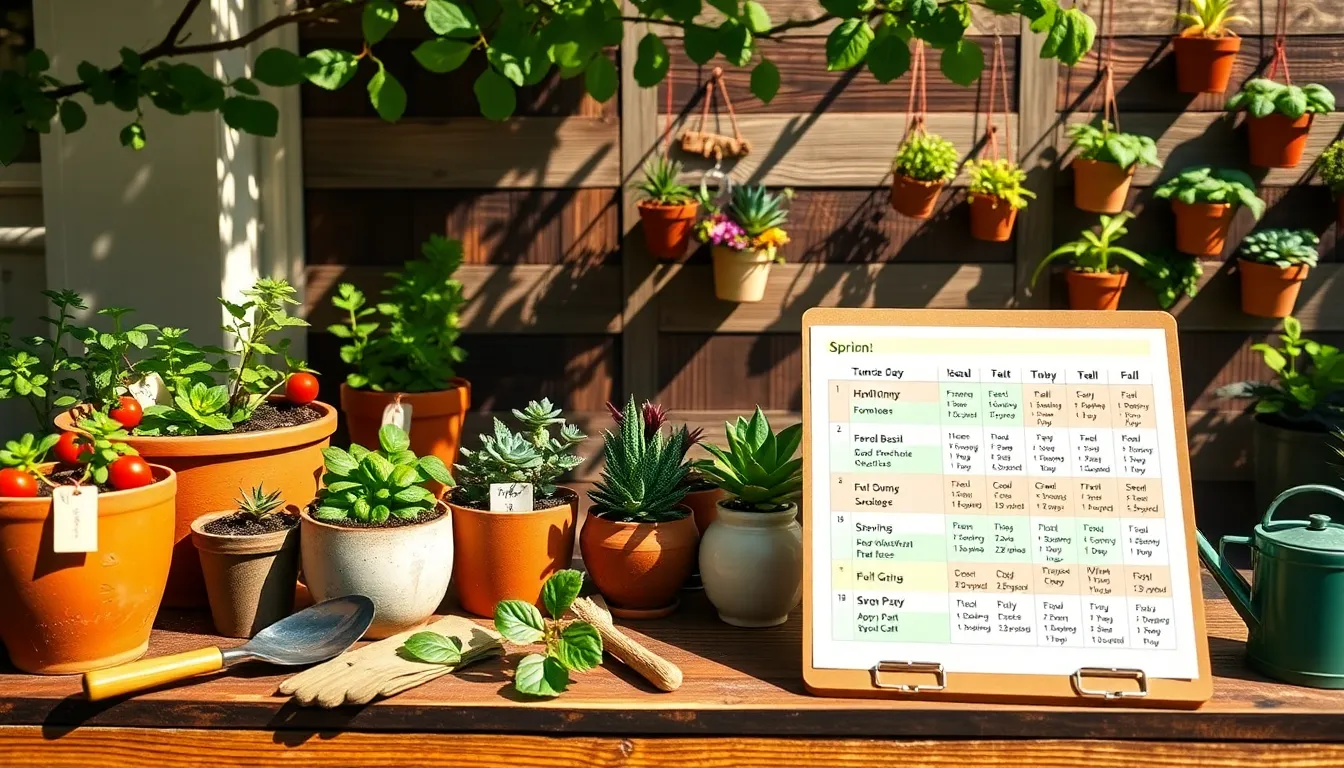Welcome to “Best Time To Plant Seeds In Containers,” where we explore the thrilling world of indoor gardening and unlock the secrets to lush, thriving plants right in your home! Whether you’re a beginner eager to see your first sprout or a seasoned gardener looking to refine your indoor planting techniques, this guide is your ticket to a flourishing green oasis. Discover the joy of nurturing life from seed to leaf, and get ready to witness the magic unfold as your container garden bursts into vibrant life.
In this guide, you’ll find a carefully curated list of indoor plants perfectly suited for container growth, ensuring you have a head start on success. Knowing the ideal planting times and conditions is crucial for maximizing growth, and we’re here to empower you with that knowledge. Imagine the satisfaction of watching your seeds transform into healthy plants, knowing you timed it just right. With our practical tips and insights, you’ll cultivate not only plants but also your confidence as a gardener, enjoying the rewards of your efforts in every sprouting leaf and blooming flower.
Herb Seed Kits (Indoor-Friendly Varieties)
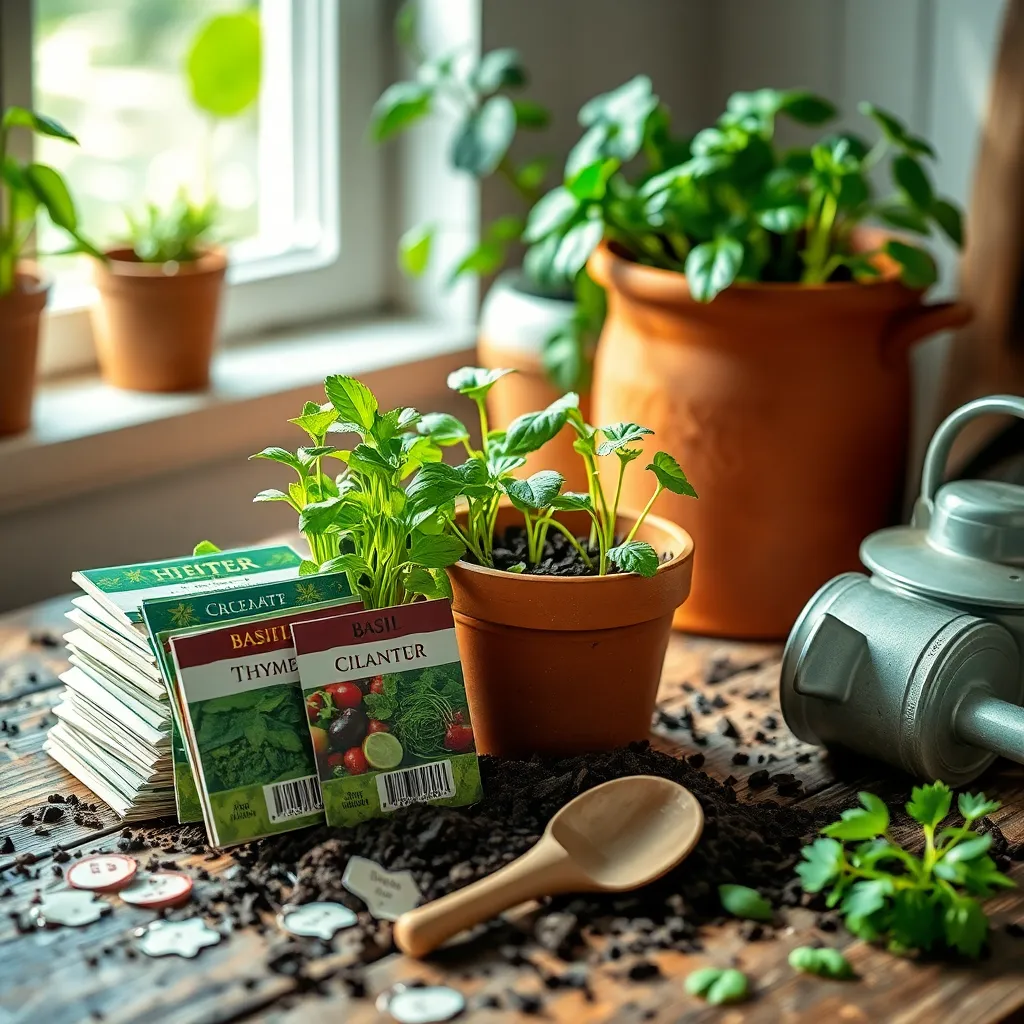
Herb seed kits designed for indoor growing offer a convenient way to bring fresh flavors into your kitchen all year round. These kits typically include seeds for easy-to-grow herbs like basil, mint, and parsley, which thrive indoors with the right care.
To start, use a well-draining potting mix that is rich in organic matter, as this will support healthy root development. It’s essential to plant the seeds at the recommended depth, usually about a quarter of an inch, and keep the soil consistently moist until germination occurs.
Once the seedlings emerge, place the containers in a spot where they can receive at least six hours of bright, indirect sunlight each day. If natural light is limited, consider supplementing with a grow light to ensure your herbs get the necessary light intensity to thrive.
Regular watering is crucial, but be cautious not to overwater, as herbs are prone to root rot in soggy soil. An advanced tip is to use a self-watering container to maintain optimal moisture levels, which can be especially helpful for beginners.
For continuous growth and harvest, regularly pinch back the tops of your herbs to encourage bushier growth and prevent them from becoming leggy. This not only promotes more vigorous plants but also ensures a steady supply of fresh leaves for your culinary creations.
Biodegradable Seed Starting Pots (Eco-Conscious Choice)
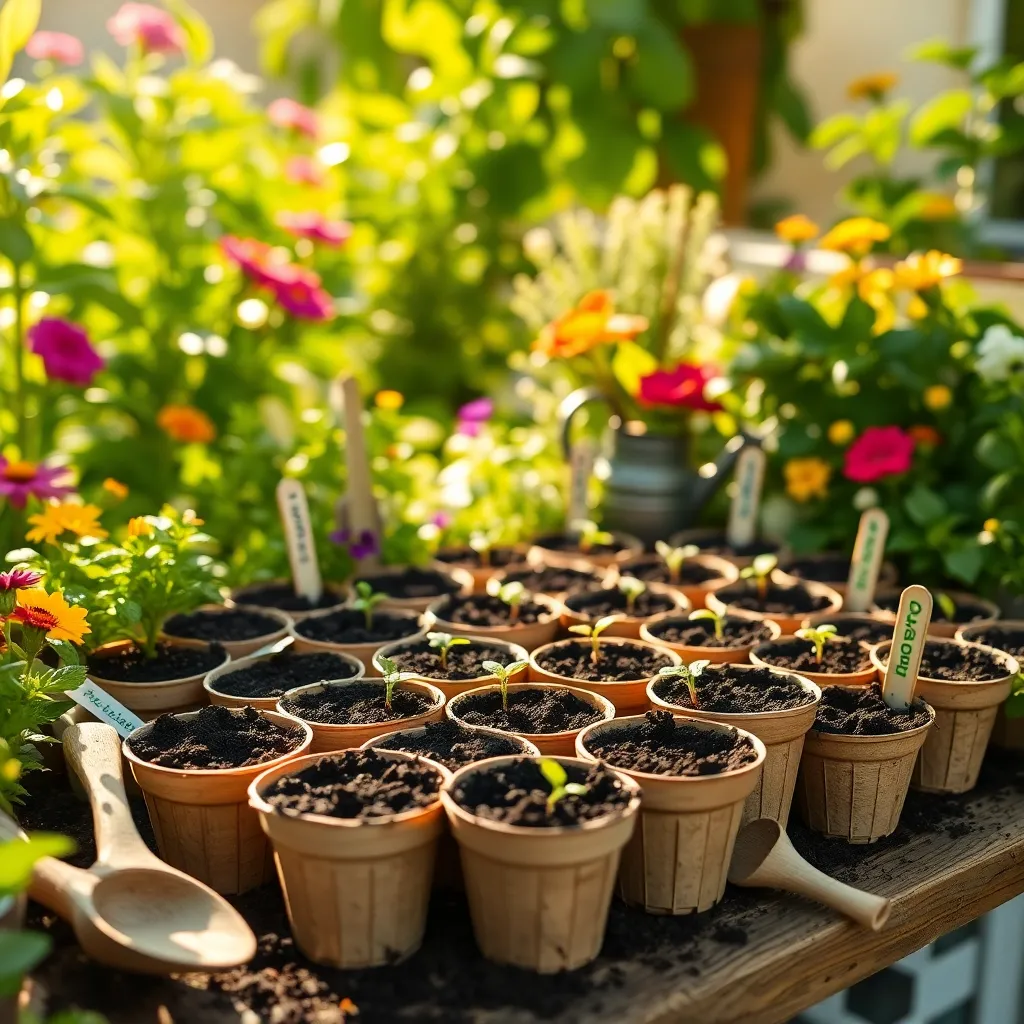
Biodegradable seed starting pots are an excellent choice for gardeners aiming to reduce their environmental impact. These pots are typically made from natural materials such as peat, coconut coir, or recycled paper, which decompose naturally in the soil, promoting a sustainable gardening practice.
When using biodegradable pots, it’s essential to ensure they are kept moist but not soggy to maintain their integrity until transplanting. Place them in a well-lit area, ensuring they receive adequate sunlight or use a grow light if necessary to encourage strong seedling growth.
For optimal results, fill your biodegradable pots with a high-quality seed starting mix designed to retain moisture while providing excellent drainage. This will support the young plants’ root development and give them the best start possible.
As the seedlings grow, it’s crucial to harden them off before transplanting them into the garden. Gradually acclimate them to outdoor conditions by placing them outside for a few hours each day, increasing the time over a week.
Advanced gardeners can experiment with different biodegradable pot materials to discover what works best with specific plant varieties. Some materials, like coconut coir, provide added benefits of aeration and moisture retention, which may be advantageous for certain plants.
LED Grow Lights (Optimal Seedling Growth)
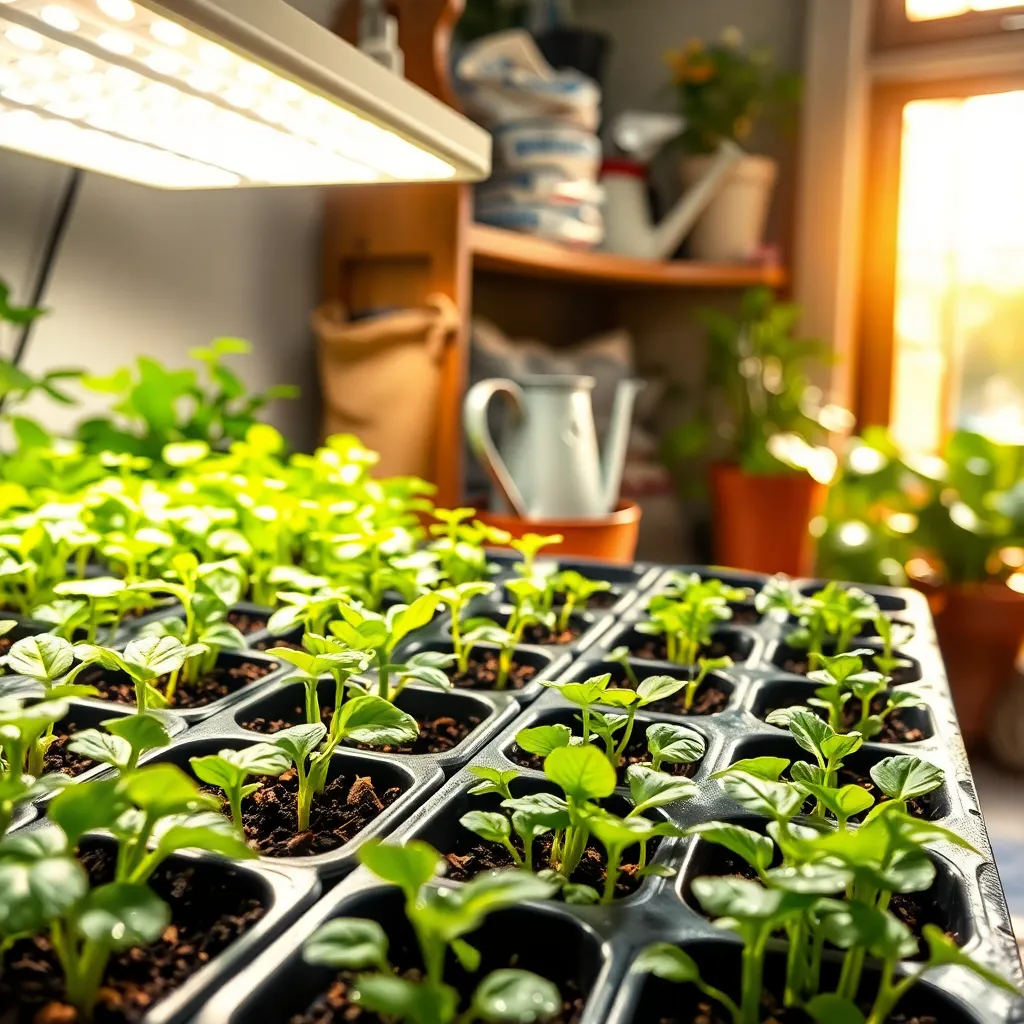
LED grow lights are an essential tool for gardeners aiming to achieve optimal seedling growth indoors. These lights provide a full spectrum of light that mimics sunlight, ensuring that seedlings get the energy they need to thrive even in low-light conditions.
When setting up your LED grow lights, position them about 2 to 4 inches above the seedlings to prevent them from becoming leggy. Adjust the height of the lights as the seedlings grow, maintaining the optimal distance to ensure proper light exposure and energy efficiency.
It’s crucial to set your grow lights to run for 12 to 16 hours a day to replicate natural daylight cycles. Using a timer can help maintain this schedule consistently, which is key for robust growth and development.
For those new to using LED grow lights, selecting a model with adjustable spectrum settings can be beneficial. This feature allows you to tailor the light spectrum to different growth stages, enhancing photosynthesis and improving seedling health.
Moisture Retention Soil Mix (Hydration Balance)
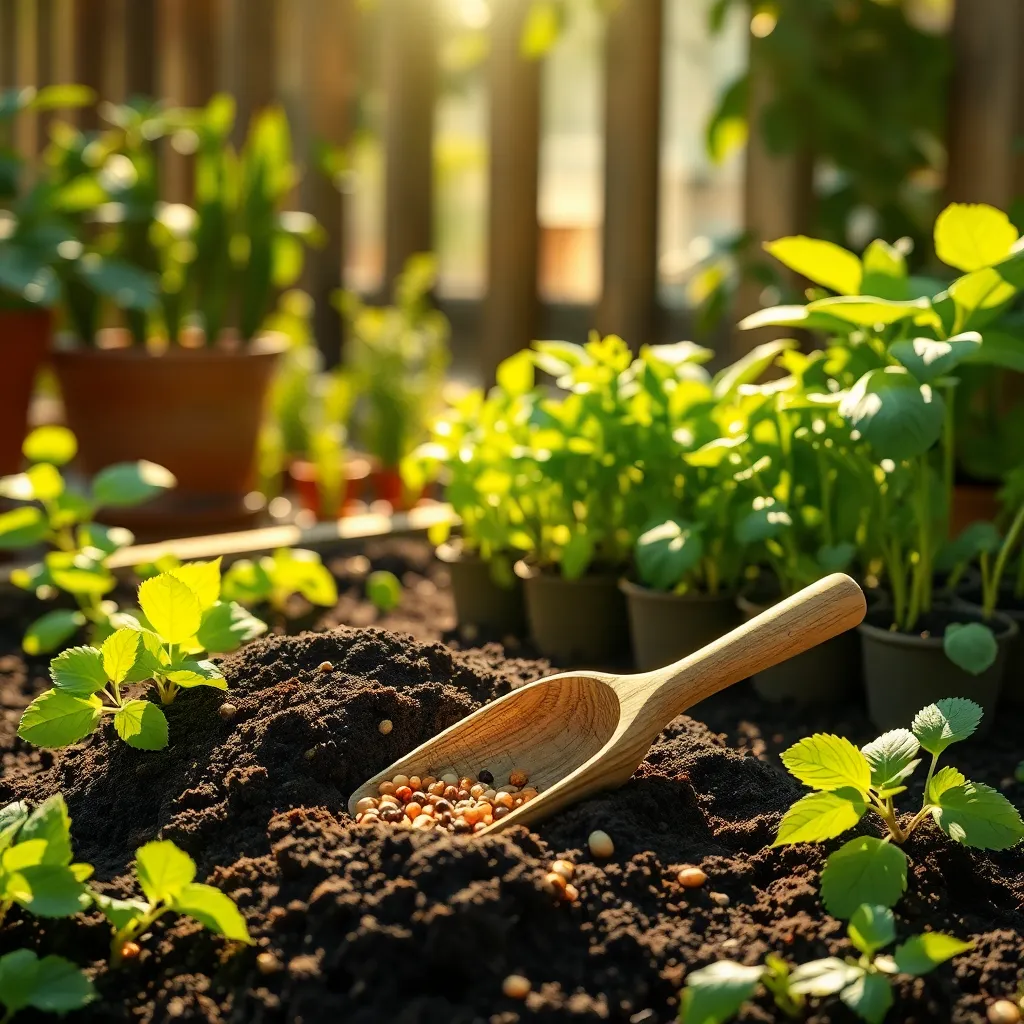
Creating a soil mix that retains moisture yet drains well is crucial for successful container gardening. Balancing hydration ensures that seeds have the right conditions to germinate and thrive, preventing them from drying out or becoming waterlogged.
Start with a base of high-quality potting mix to ensure good drainage and aeration. Look for mixes that contain ingredients like coconut coir or peat moss, as these materials help retain moisture while providing necessary aeration.
Adding perlite or vermiculite can further improve the water retention capacity of your soil mix. These additives not only help maintain moisture levels but also enhance the soil’s structure, ensuring the roots receive ample oxygen.
For those looking to experiment, a homemade blend can be made by mixing equal parts of potting soil, coarse sand, and compost. This combination offers a balanced environment, fostering both drainage and moisture retention, which is ideal for a wide range of seeds.
Remember, different plants have unique water needs, so observe how quickly the soil dries out and adjust your watering frequency accordingly. Testing the moisture level with your finger can be a simple yet effective way to gauge when it’s time to water your containers.
Automatic Watering Globes (Consistent Moisture Supply)
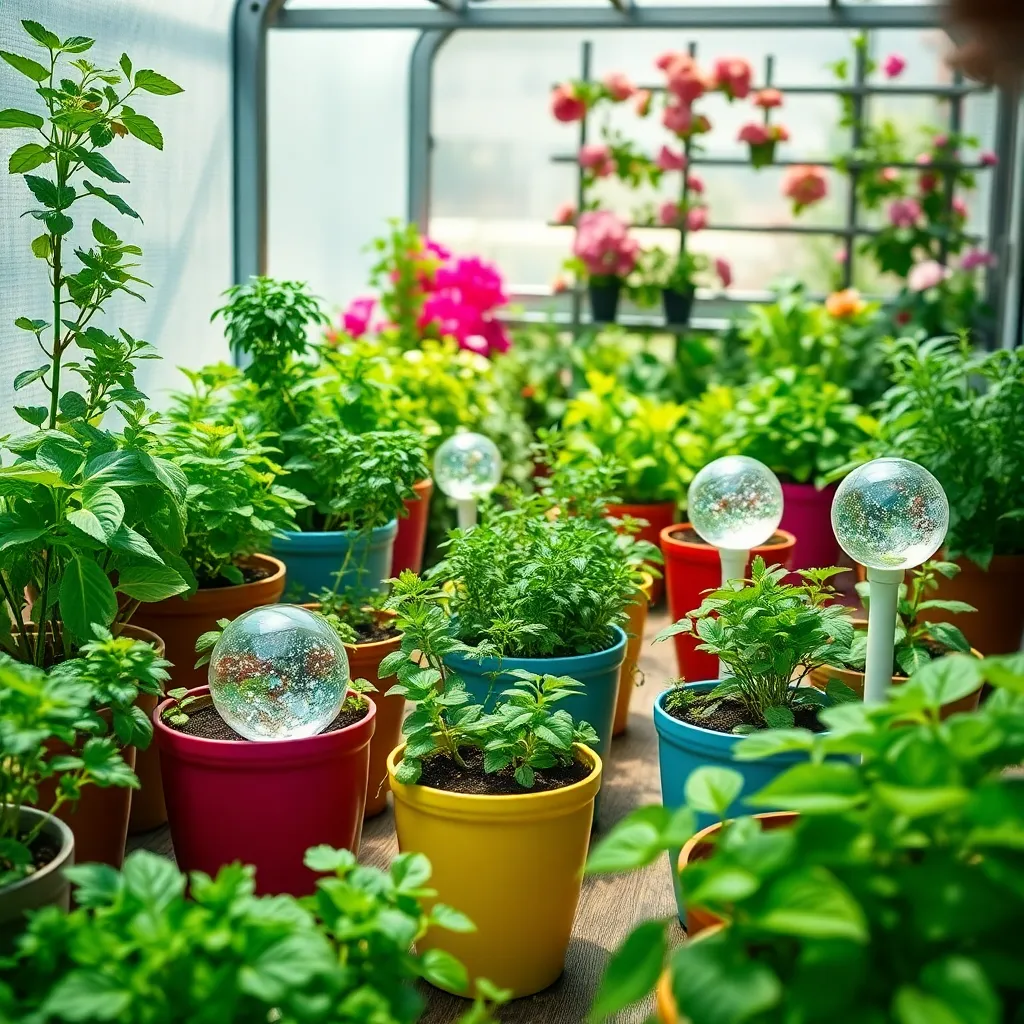
Automatic watering globes can be a gardener’s best friend when it comes to maintaining consistent moisture levels in container plants. These devices release water gradually, ensuring that your plants receive the hydration they need without the risk of overwatering.
To use watering globes effectively, simply fill them with water and insert the stem into the soil of your container. It’s important to position the globe firmly so that it touches the root zone, allowing optimal water distribution.
For beginners, watering globes provide an easy solution to maintain plant health during busy schedules or vacations. More experienced gardeners can use these globes in conjunction with a moisture meter to fine-tune their watering strategy, ensuring each plant’s specific needs are met.
Choose the right size of watering globe based on the size of your container; larger containers may require multiple globes for adequate coverage. Additionally, consider using distilled water to fill the globes if your tap water is hard, as this can prevent mineral buildup in the soil.
Conclusion: Growing Success with These Plants
In nurturing relationships, timing, patience, and care are paramount, much like planting seeds in containers. We explored five essential concepts: understanding the right moment to initiate important conversations, the importance of a nurturing environment, the need for consistent care and attention, recognizing when to give space for growth, and celebrating milestones as they blossom. These insights can transform your relationship into a flourishing partnership.
As an immediate step, choose one relationship area you’d like to cultivate—whether it’s communication, empathy, or shared activities—and dedicate time this week to nurture it. Your active involvement will sow the seeds of deeper connection and understanding.
Remember, sustaining a thriving relationship is an ongoing journey. Bookmark this article for future reference, ensuring you have these valuable insights at your fingertips whenever needed.
Looking ahead, by integrating these practices, you’re not just planting seeds; you’re laying the foundation for a resilient and rewarding relationship. Embrace this journey with optimism and warmth, knowing that your efforts will yield a harvest of love and partnership. Let this be your guide to a brighter, more connected future.

